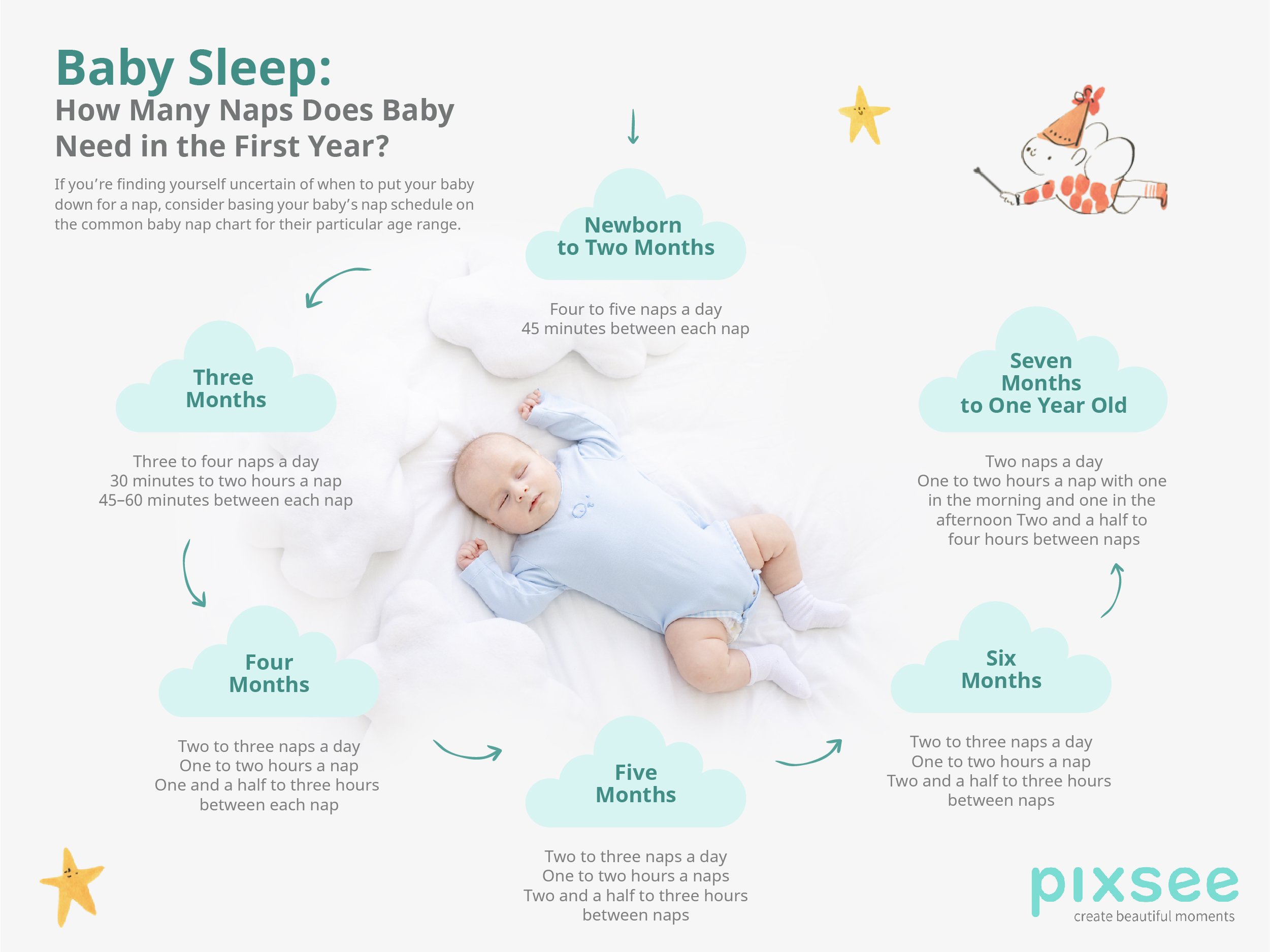Babies sleep. A lot. Especially newborns, who typically spend 14–17 hours a day sleeping (and sometimes up to 19 hours!). You might know this already, whether it's because you've had newborns before or your newborn has just arrived. What you might not know, though, is how many naps your baby needs in their first year. This is an understandable question to have, and you aren't wrong for wondering it.
Babies and naps go hand in hand, but there are still many unknowns that might leave you feeling uncertain of whether or not you're "doing it right." Why do they nap so much? How long should they be napping for? How can you stick to a consistent nap schedule? All of these questions (and any others you might still have) are perfectly normal, and thankfully, they all come with answers. Let's talk about it.
Why Naps Are Important for Babies
You likely already know that skipping nap time is a surefire recipe for total disaster. Okay, so maybe "total disaster" is a little dramatic, but you know that no nap for a baby equals meltdowns, irritability, and poor sleep habits for all involved. Why is this? As it turns out, it all comes down to the baby's natural rhythms and their simple lack of ability to stay up for as long as a fully grown person.
It all boils down to two natural sleep regulation processes: the circadian process and the homeostatic process. The former regulates the body's comprehension of light and dark, while the latter regulates the body's comprehension of how long you've been awake. For newborns, these processes are still being hashed out, and naturally, they cycle through more quickly. As such, naps are necessary and naps are frequent.
How To Create a Baby's Nap Schedule
You now understand why your baby's nap schedule matters, but you still might be left wondering how exactly you're supposed to create a schedule for your baby's naps. Fear not: It's all about doing what's best and most natural for your newborn. It starts with observation. Simply watch your baby for a week and see what rhythms their body naturally falls into. If they tend to fall asleep at a certain time of day, let them. If not, you can create a schedule for them.
This can be done by observing the natural signals your baby sends when they begin to feel tired — signals such as yawning, fussiness, rubbing their eyes, and so on. Keeping the baby active throughout the day when they aren't napping can help make these signs even more obvious. And, of course, when it comes time to put the baby down for a nap, always use their crib.
Common Nap Schedules for Each Stage of the First Year

If you're finding yourself uncertain of when to put your baby down for a nap, consider basing your baby's nap schedule on the common baby nap chart for their particular age range.
Newborn to Two Months
- Four to five naps a day
- 45 minutes between each nap
Three Months
- Three to four naps a day
- 30 minutes to two hours a nap
- 45–60 minutes between each nap
Four Months
- Two to three naps a day
- One to two hours of nap
- One and a half to three hours between each nap
Five Months
- Two to three naps a day
- One to two hours of nap
- Two and a half to three hours between naps
Six Months
- Two to three naps a day
- One to two hours of nap
- Two and a half to three hours between naps
Seven Months to One-Year-Old
- Two naps a day
- One to two hours a nap with one in the morning and one in the afternoon
- Two and a half to four hours between naps
Tips on Creating Healthy Nap Routines for Baby
One of the most common ways to stick to a healthy nap routine for your baby is by abiding by the 2-3-4 rule. This is a common routine many new parents tend to follow, and it typically works remarkably well. It's all about increasing the time between naps throughout the day. First, two hours spent awake preceding the first nap, then three hours spent awake following the first and preceding the second nap, and then four hours spent awake before it's time to go to bed for the night.
Beyond this, here are some other tips that can help you create your baby's nap schedule.
- Find a nap routine that doesn't disrupt your sleeping schedule.
- Don't over-schedule, especially if your baby falls into a natural rhythm.
- Make sure to meet all your baby's other basic needs before naps to help make sleep come more naturally.
- Swaddle your baby and keep them on their back for maximum coziness and safety.
- Use a baby monitor, like the Pixsee Smart Baby Monitor, so you can check on your baby clearly without interrupting their sleep, play white noise or soothing lullabies, and be notified if their "safe zone" is interrupted or they've covered their face with a blanket.
The Bottom Line: Baby's Nap Schedule for the First Year
Naps are so important — both for your baby's healthy sleeping schedule and your own. Following the helpful tips and tricks above and utilizing the Pixsee smart baby monitor can help make nap time easier and less stressful than ever before.
Visit our Pixsee Shop and Amazon online store to learn more about how Pixsee can help you tackle nap time with ease.







